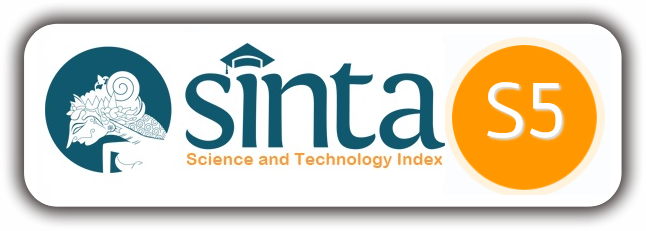TRANSPORTASI PARA PEJUANG PADA MASA REVOLUSI FISIK DI BALI 1945-1950
Abstract
On behalf of the Indonesian nation IR. Sukarno who was accompanied by Drs. Mohammad Hatta on August 17th, 1945 proclaimed Indonesian independence on Jalan Pegangsaan Timur No. 56 Jakarta at 10:00 am. News of the proclamation of Indonesian independence was only heard in Bali on August 23rd 1945 since the return of Mr. I Gusti Ketut Puja from Jakarta. News of the proclamation arrived late in Bali due to lack of communication and transportation with the island of Java. At this time Japan was still showing an attitude of power in Bali, therefore on December 13th 1945 a general attack was carried out against Japanese protests throughout Bali. This attack turned out to be a failure because Japan had known in advance. Since it was impossible to get weapons in Bali, I Gusti Ngurah Rai and his friends finally went to Java to report on the situation in Bali and asked for weapons. After some time living on the island of Java on April 4th, 1946 I Gusti Ngurah Rai and his friends finally returned to Bali where it landed at Yeh Kuning. From here I Gusti Ngurah Rai continued his journey to the village of Munduk Malang. From the village of Munduk Malang, I Gusti Ngurah Rai carried out an attack on the Dutch / NICA ambushes around him. Due to the position of I Gusti Ngurah Rai headquarters and its troops being known by the Netherlands / NICA, it was decided to hold a "Long March" or also known as "The June-July Trip". Long March starts by walking from Bengkel Anyar Village by climbing Mount Batukaru to Mount Agung. The purpose of holding a long march is to increase the people's enthusiasm, divert Dutch attention to the east, and facilitate assistance from Java to Bali. In addition to the fighters using walking during the physical revolution in Bali to be able to connect with other fighters also used transportation. Transportation is used by fighters for long trips and when the situation is safe. Transportation that is used at this time besides walking also uses such as truck, sedan, pickup, bus, bicycle, dock, cart, and boat for the sea. With this means of communication between the fighters remain connected so that the struggle in Bali can last long enough to face the Netherlands / NICA.References
Balai Pustaka. (2001). Kamus Besar Bahasa Indonesia. Jakarta.
Dekker, I. N. (1980). Sejarah Revolusi Nasional. Jakarta: PN Balai Pustaka.
Hardjawiganda, R., & (dkk.). (1982). Operasi Lintas Laut Banyuwangi – Bali. Jakarta: Departemen Pertahanan Keamanan Pusat Sejarah ABRI.
Jajasan Kebaktian Proklamasi Daerah Propinsi Bali. (1968). Sejarah Singkat Pahlawan Nasional Kolonel Anumerta I Gusti Ngurah Rai. Marga.
Kartodirdjo, S. (1970). Beberapa Masalah Teori Dan Metodologi Sejarah. Lembaran Sejarah, (6).
Kartodirdjo, S., & (dkk.). (1977). Sejarah Nasional Indonesia VI. Jakarta: Balai Pustaka.
Nasution,A, H. (1977). Sekitar Perang Kemerdekaan Indonesia 2. Bandung: Angkasa.
Pendit, N. S. (1979). Bali Berjuang.
Pindha, I. G. N. (1964). Pertempuran Besar Tanah Aron. Denpasar: Jajasan Universitas Marhaen.
Pindha, I. G. N. (1968). Gempilan Perdjuangan Physik Di Bali, Masa – Masa Krisis XXIII. Harian Pagi Suluh Marhaen.
Pindha, I. G. N. (1972). Kirikumi Besar Besaran Terhadap Kota Denpasar. Denpasar.
Poerwadarminta, W. J. S. (1976). Kamus Umum Bahasa Indonesia. Jakarta: PN Balai Pustaka.
Wijakusuma. (1979). Kisah Perjuangan Gerilya Di Bali (8), Jadi NICA Sehari. Denpasar: Bali Post.
 Abstract viewed = 230 times
Abstract viewed = 230 times
 PDF downloaded = 1962 times
PDF downloaded = 1962 times











